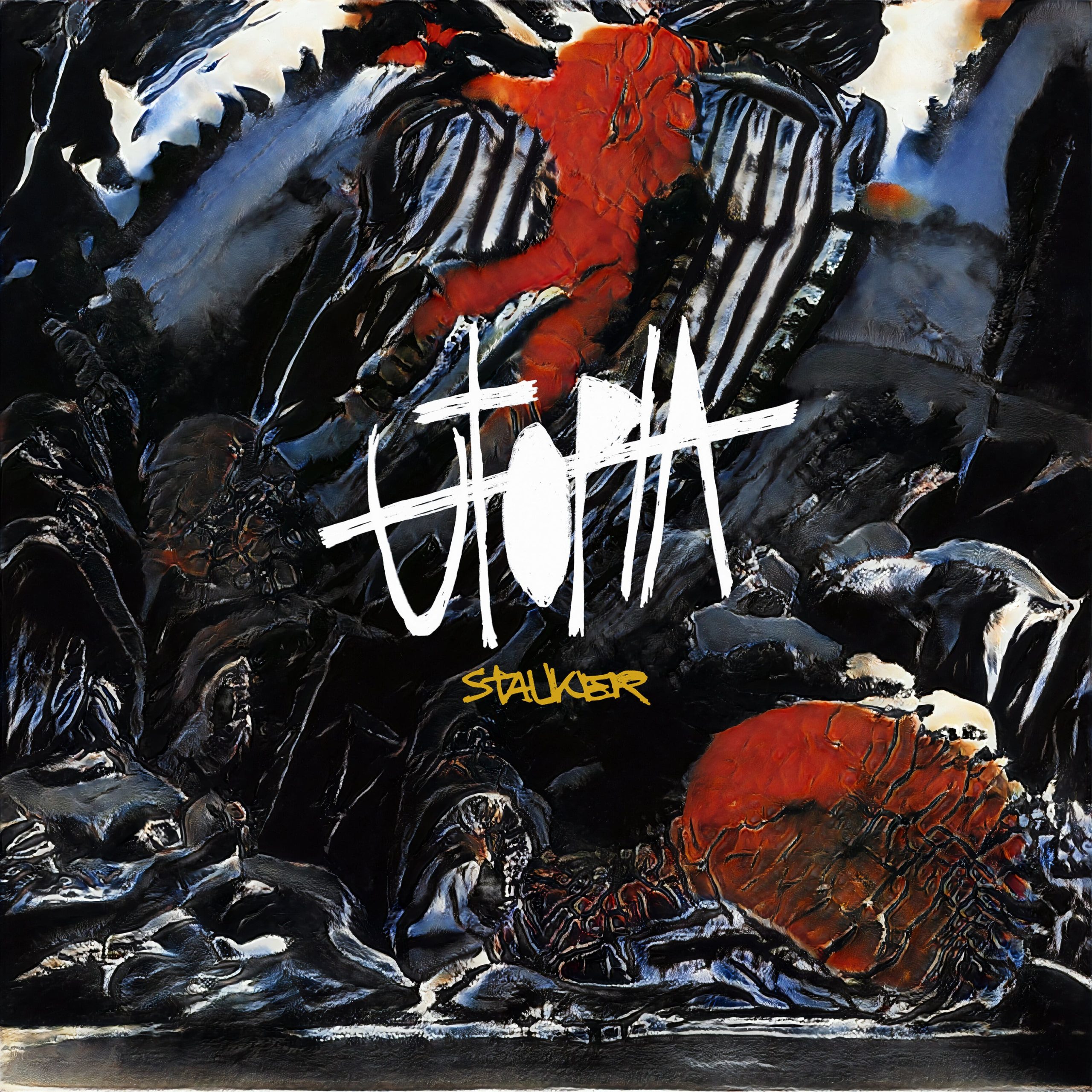
Utopia
August 26, 2021| Becton Simpson | RELEASE REVIEW
Utopia – Stalker | Album Review
Perhaps the most amusing part of Utopia’s backstory is the fact that the duo’s guitarist John Bailey is also the guitarist for Aled Jones and Russell Watson, a style of music at total odds from what you will hear on the band’s debut record Stalker.
Up there as one of the most extreme metal albums you are likely to hear this year, Stalker is an all-star onslaught featuring an impressive list of guest artists including the likes of Baard Kolstad from Leprous and Mike Moran, the actual keyboardist for both Ozzy Osbourne and George Harrison. Aside from a host of guest musicians, the band itself is just John Bailey and Corrupt Moral Altar vocalist Chris Reese. For a debut, it’s pretty impressive, damn near startling and it’s obvious these guys know what they’re doing. Strap in, you’re in for a rocky ride.
Opening track ‘The Bus Station Roof’ is the perfect example of the kind of experimental tech metal on offer throughout the record. The first eight seconds are ear-drum bursting insanely heavy scream-filled noise. Then it breaks out into a sort of chilled out jazz-like section, as if you’re stood in an elevator that’s just arisen from the depths of the void itself. It’s the bass that drives these delicate sections, adding a sort of quirky charm to the track and a respite from the onslaught, although it still sounds like it’s the inner thoughts of a highly deranged mind driven insane from knowing all the possible configurations of music. From here, the track changes completely about a minute and a half in into something totally different. There’s multiple dropouts, changes and transitions in the opener alone, which gives you an idea of what’s to come.
This record is like The Dillinger Escape Plan up to their eyeballs on both stimulants and eugeroics; the transitions within Stalker are totally unexpected and send you directly west. Intricately delicate yet chaotic sounding guitar licks drive ‘Full Length Biography’ and at one point it’s like listening to a classical piece but that kind of calm only lasts for mere seconds before exploding into an auditory attack. Elsewhere, high pitched shrieks contrasted with daemonic growls litter the record. Delicacy and beauty contrast with brutal, evil and ugly. Track named after the band, ‘Utopia’, almost lulls you into a false sense of security with its soft tones and quiet opening. Then it breaks out into a black metal type affair at one minute in, layered with discordancy and haunting chords that make you flinch. What is this song about? What are any of them about?
Well, beneath it’s convulsing demeanour, Stalker is a record that explores and details a host of difficult subject matters, with the main topic reflecting upon neurodiversity, and how ultimately, we are all trying to pursue satisfying lives within a world that’s rampant with perpetual conflict. The aforementioned ‘The Bus Station Roof’ is a sonic depiction of a mind that’s decided that self-annihilation is the best course of action, and elsewhere, tracks such as ‘Smileyawnednodded’ and ‘Impotent Prophet’ explore how the self-centred actions of others hinder the mental balance of their peers. Lyrically, it’s a record it’s an embedded within philosophy – but ultimately – this is a fact that many won’t perceive. Such thematic topics are a mainstay within mathcore and tech-metal, but there are times where Stalker falls into a common pitfall where such legitimately thought provoking topics are completely overshadowed by the barrages of noise and aren’t expressed with articulate flair. Some tracks, such as ‘What About Me’ and ‘Spirit Waves’ are successful in their expression, but many will ultimately just see this as noise for noise’s sake.
This is not the kind of album you’d put on to unwind after getting in from work. It’s not the kind of album you’d have on over dinner. It’s not the kind of album you’d play to your parents. It’s extreme in every capacity and there‘s nothing relaxing about it whatsoever. Even the ‘relaxing’ moments musically are fraught with tension because, as a listener, you know it won’t last for long. That chaos and unpredictability is, of course, part of the album’s charm. It’s probably the kind of album you’d put on before a night out to get you pumped up and energised. But it’s also not the kind of album you’d probably listen to that often which is potentially where it falls down. There’s no choruses or hooks. There’s nothing to latch on to or sing along with at a show, but of course, that’s not what they’re going for anyway. It’s supposed to be experimental, it’s supposed to be extreme, and it certainly ticks those boxes.
Ending with the ominous ‘It’s Not The End’, who’s title sounds like a threat of more music and further records to come, the record finishes as it begun – with an explosive beginning and screams filling your ears. The almost jazz-like tempos and scales which are prominent throughout the album also feature here, as well as the usual quieter sections to allow some breathing room. It’s an album which deals expertly in the concepts of ‘light and shade’ and the level of musicianship it takes to play this type of music cannot be understated. There’s some samples of gently lapping water and birds singing. For a moment, all his calm. Then, of course, it all kicks off again. Ah well, it was nice while it lasted. Thirty eight minutes of utter, utter, chaos. At times, it does get a little repetitive over it’s runtime, but it’s a fun, wild and a nauseatingly convulsive ride.



